In this blog post I will delve into the realm of the latest advancements in Power Automate, specifically focusing on the integration of Azure OpenAI and GPT models. In this technical exploration, I will uncover the new capabilities that these innovations bring to the table, revolutionizing the way we automate processes and harness the power of artificial intelligence.
Power Automate, Microsoft’s robust workflow automation platform, has always been at the forefront of empowering organizations to streamline their operations. With the integration of Azure OpenAI and GPT models, Power Automate takes a giant leap forward, enabling users to leverage the immense potential of natural language processing and machine learning.
Azure OpenAI, a collaboration between Microsoft and OpenAI, combines the vast computational resources of Azure with the cutting-edge AI models developed by OpenAI. This integration opens a world of possibilities, allowing developers and organizations to create intelligent workflows that can understand, interpret, and respond to human language with remarkable accuracy.
One of the most exciting aspects of this integration is the incorporation of GPT (Generative Pre-trained Transformer) models. GPT models have gained significant attention in the AI community due to their ability to generate human-like text and comprehend complex language structures. By integrating GPT models into Power Automate, users can now automate tasks that involve natural language understanding, generation, and translation, taking automation to a whole new level.
Power Automate and AI
In my previous post I have presented how Power Automate benefits from AI by explaining and describing co-pilots – the conversational AI that helps makers in achieving desired results faster – e.g., by creating actions for them, writing expressions etc. This area may be called the AI that helps authoring.
The other area is AI that helps with automation, and this is what I want to focus on. The functionalities are slowly rolling out, you may not yet see them in your tenant especially if the environment you’re using is not in the US region. But worry not – soon these features will be available to anyone.
The list of news may ne short, but their capabilities are really impressive. I mean:
- New action in Power Automate: “Create text with GPT”,
- New pre-built model in AI Builder: “Create text, summarize documents, and more with GPT”,
- New action in Power Automate for Desktop: “Create text with GPT on Azure OpenAI Service”.
These three updates are in preview and do require premium license. Let’s take a look at each of them.
Create text with GPT – Power Automate
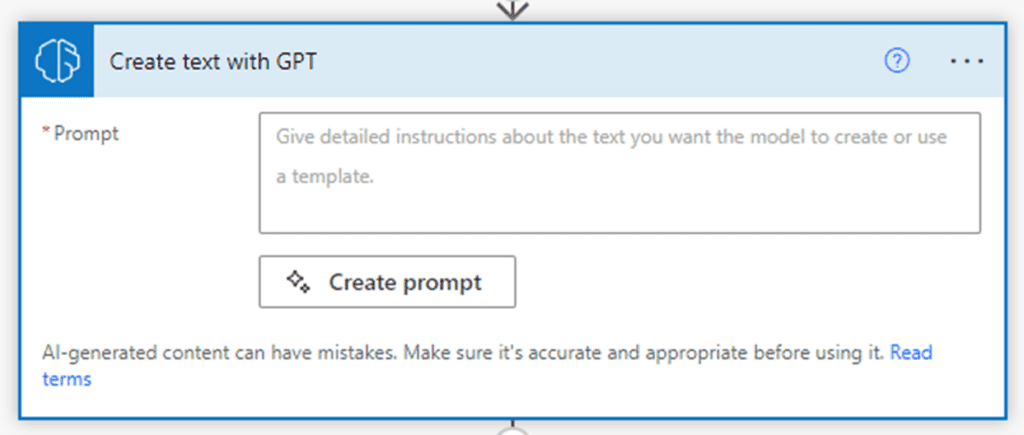
The purpose of the action is to understand input from a user and return the output in the desired format.
Important! This action uses GPT (Generative Pre-trained Transformer) models, therefore it is not actually returning existing information like a search would do, but instead is generating something new from the existing information. This is why each action and dialog window you will see in this functionality is supplemented with the message: “Make sure AI-generated content is accurate and appropriate before using it.”, to make you aware, that the results should not be taken “as-is”, but reviewed prior to be used in other actions.
To get a better understanding of what can be the input and a possible output, let’s take a look at the “Create prompt” option for example.
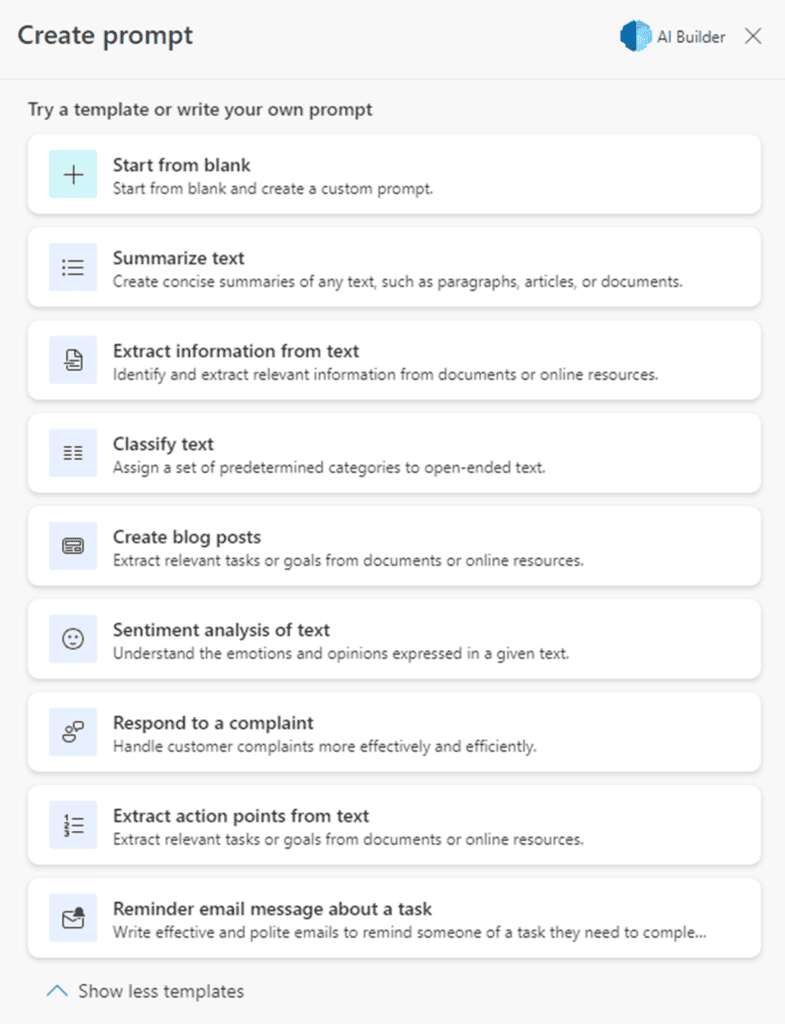
After clicking it, you will be presented with a list of examples, that we can choose to start form. Let’s try the “Extract action points from text”, by providing an email sent from a manager to their assistant with a request to organize a party for their employees. The expected result for the assistant is the list of actions they must take to complete the task:
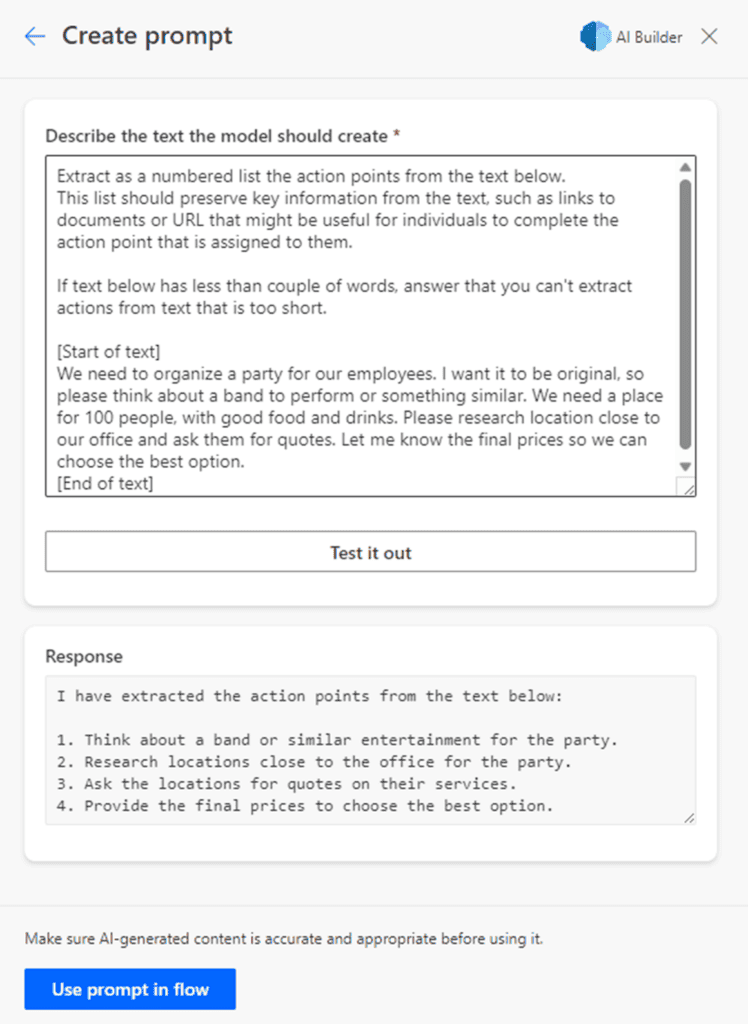
If you are satisfied with the results of the test, simply click the button to “Use prompt in flow”. If not, try modifying the description of what you expect the AI to do with the given text. As I mentioned before, the result is generated. It may or may not be accurate, therefore before using it in other actions, it should be reviewed and accepted. Together with the new AI functionalities Microsoft has also released the new approval action, that is called “Start and wait for an approval of text” (you can find more about it on my YouTube channel).
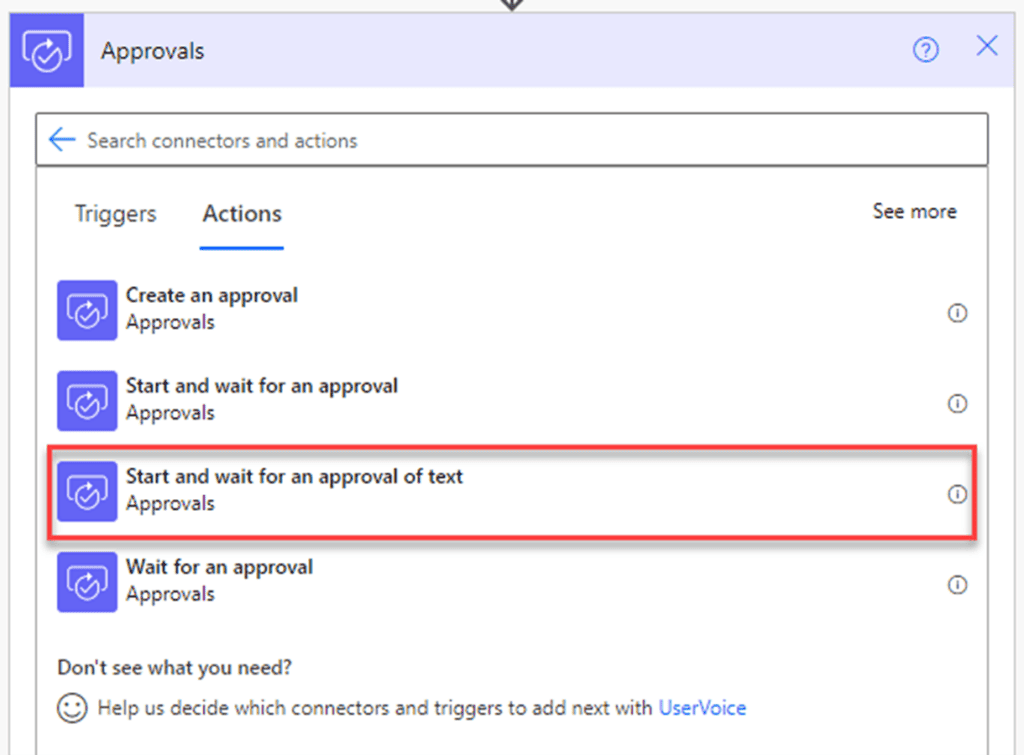
The intention here is that after GPT generates its text, it is then sent for approval. The approver can review the text and modify it if needed. After the approval is completed, the approved and eventually updated text is being used by next actions.
The generated text, before sending back to the sender, will of course be reviewed, and approved. Only after it will be sent back.
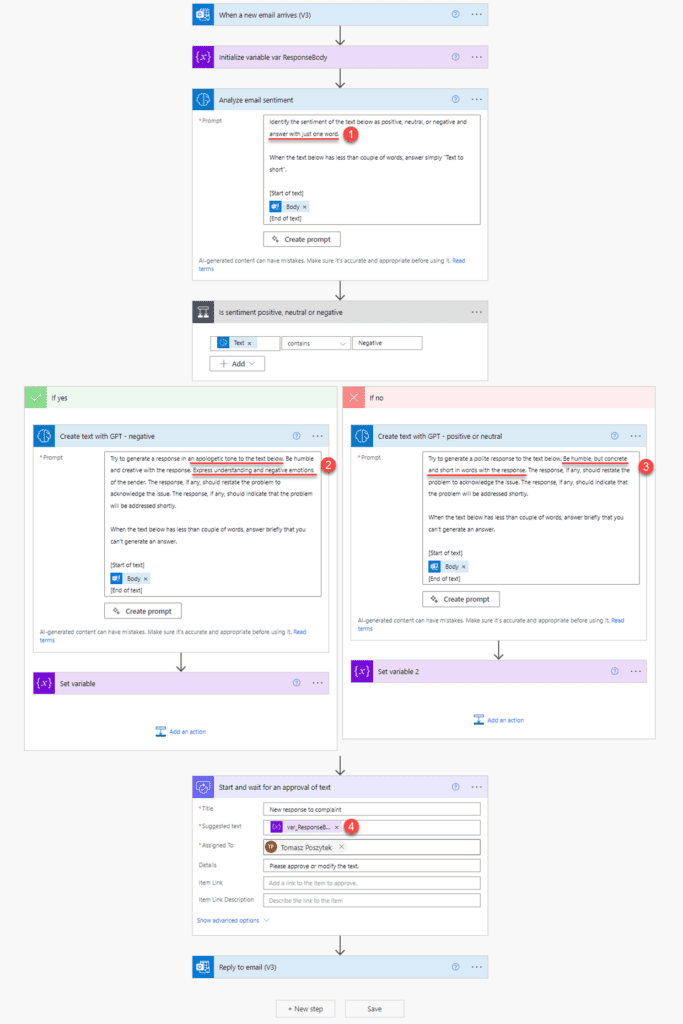
The process uses 3 new actions. First, using GPT model the sentiment of the message is analyzed and summarized with just one word: positive, negative, or neutral (1). If the message is negative, GPT model is used to generate a very humble, understanding, and apologetic response (2). In other case the response must be concrete and short (3). Finally, the generated response is sent for approval (4) and the approver may either approve or correct the text before it is sent back:

Create text, summarize documents, and more with GPT – AI Builder
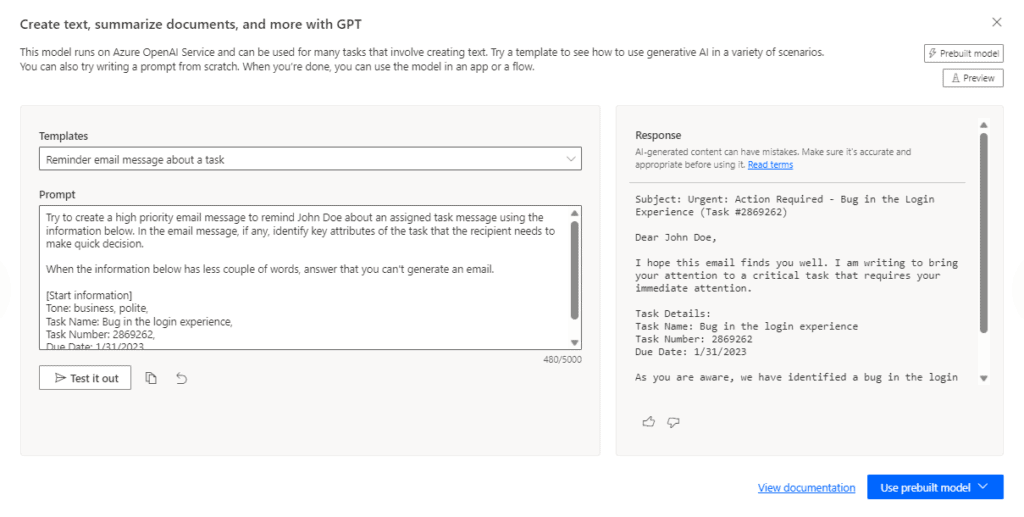
The new model basically provides exactly the same set of functionalities as the new action in Power Automate. The difference is that the model is built outside of the flow and that it is maintained in a single place, by its owner, and only shared with other users.
The biggest benefit of that is the model is then under control and that it can be used by more than one cloud flow. Also, this way you can use Azure OpenAI GPT model with Power Apps, without the need to call a cloud flow first.
Create text with GPT on Azure OpenAI Service – Power Automate for Desktop
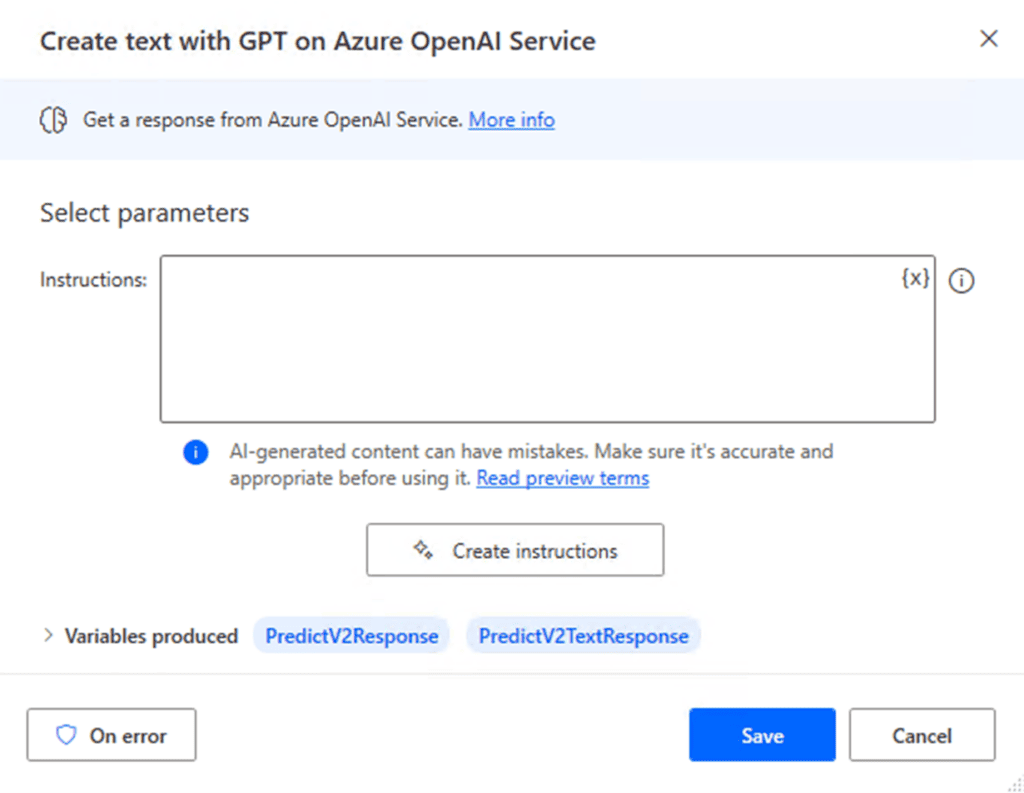
The action is nothing different and offers nothing more than what I already described for Power Automate and AI Builder. However, the number of possible use-cases may increase here, as the action can be used to assist in a variety of transformations of the data, which RPA is working with. Let’s take the below scenario for example. Company needs to store currency exchange rates daily. RPA must navigate to MSN Currency website, get element containing current rates and transform it into a CSV file. Unfortunately, the element on the website is a fancy DIV, not a regular HTML table, thus transformation may be a little cumbersome. Luckily, with the right request to GPT model:
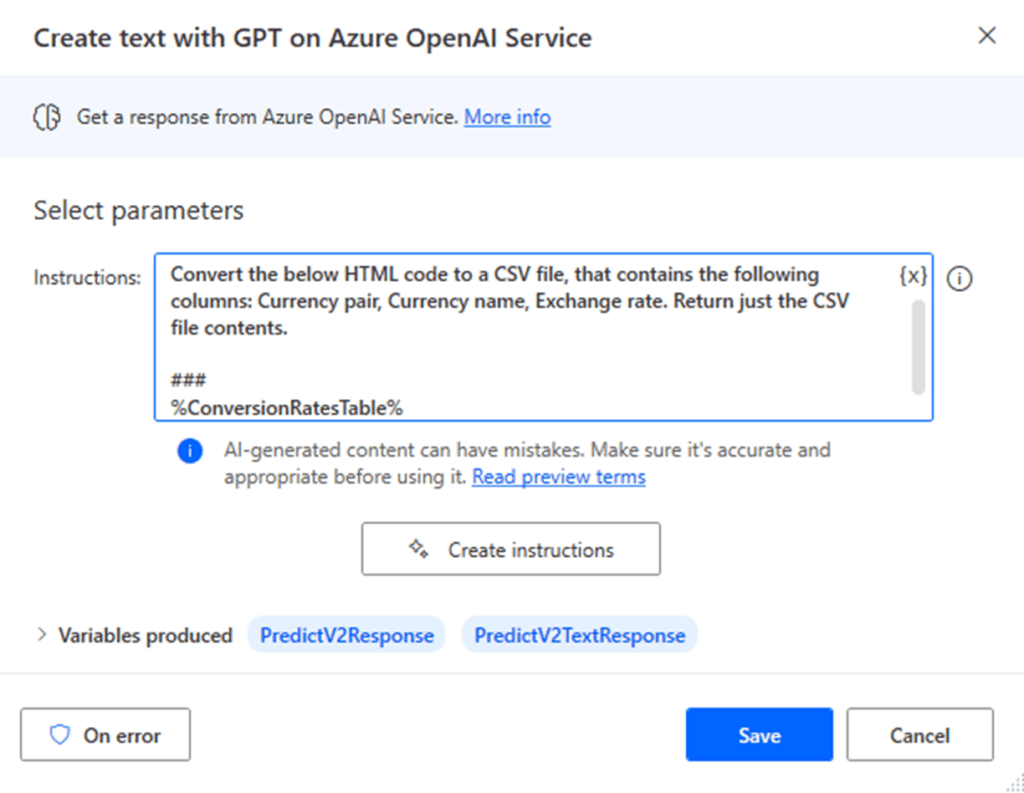
The results can be created within seconds without any actual knowledge from the maker about parsing HTML code into CSV:
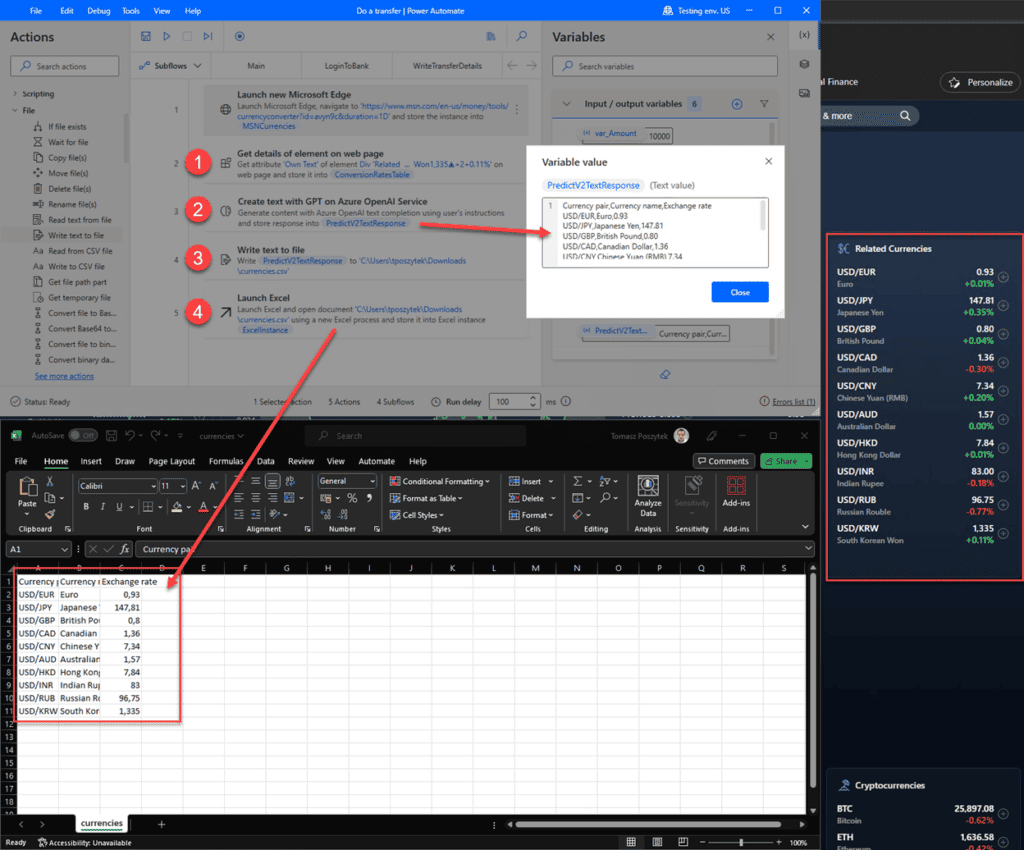
After the bot is triggered, it reads details of the UI element on the website. It retrieves the text from the given element (1). The text is then analyzed by GPT model (2) and transformed into a CSV format, that later is saved to a file (3) and presented in Excel (4). And it just took minutes for the whole process both to be built and seconds to be executed.
Wrap up!
With the latest addition of GPT models to Power Automate makers are able to receive results faster, which before would take them a long time to prepare. The generative power of the AI is impressive, but remember, it may be incorrect. Wherever you use the new features you will notice prompts to inject any kind of “human-in-the-loop” actions, which would assure the generated content is correct before it is used elsewhere.
Also, not the limits of the model. It will not help you with any real-time actions, like currency conversion, or stock exchange prices. It will not navigate to any website or asset, for getting the data. It only works on the data that is provided to it as input.
Nevertheless, I personally find these latest additions very useful and certainly will start using them in many of the new processes I will be building, as the potential benefits significantly exceed possible threats.
About the Author:
I believe in enabling organizations to work more effectively helping them to achieve this by leveraging their effectiveness through their business processes digitalization and optimization. I have strong analytical background being a Business Analyst for years. I’m an expert in Microsoft Power Platform. I have large experience also in SharePoint, and other tools for processes implementation (such as Nintex or Webcon). I continuously learns to stay up to date, and to share my knowledge not only with my customers, but with technical communities as well. I’m building business processes, and applications that are easy for users’ to stick to, so they can follow and understand them. In overall I transforms processes to be more reliable and effortless. I’m also a co-organizer of community events in Poland, and an active community member, blogger, and an international speaker.

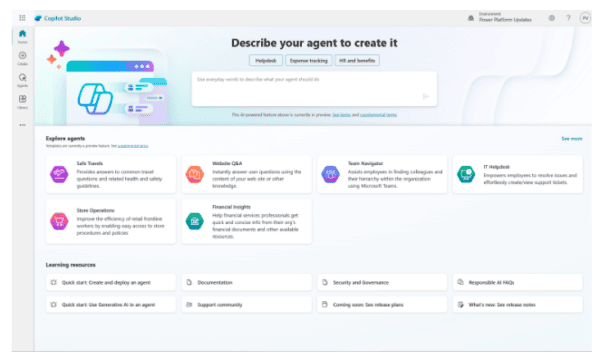







 Using a SharePoint Online list as a Knowledge source via ACTIONS in Copilot AI Studio
Using a SharePoint Online list as a Knowledge source via ACTIONS in Copilot AI Studio
